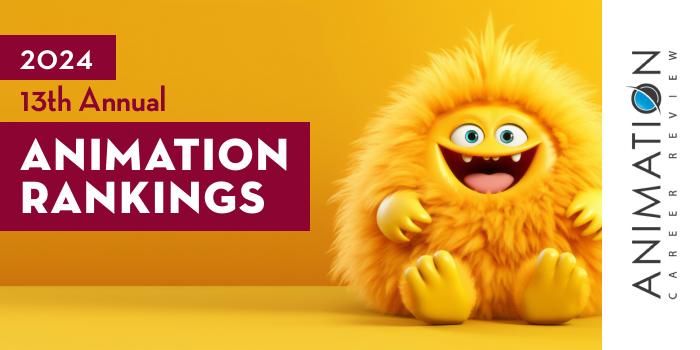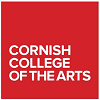

What are the top animation school programs in Washington for 2024?
| Ranking | School | City |
|---|---|---|
| 1 | DigiPen Institute of Technology | Redmond |
| 2 | University of Washington | Seattle |
| 3 | Academy of Interactive Entertainment | Seattle |
| 4 | Cornish College of the Arts | Seattle |
| 5 | Evergreen State College | Olympia |
Our 2024 ranking -our thirteenth annual- of the top animation school programs in Washington. For an explanation of the ranking criteria, click here.

DigiPen Institute of Technology (DigiPen) is the first school in the world to offer a bachelor’s degree in video game programming. The school is also a Certified Partner of SideFX—developers of the procedural 3D art software, Houdini. This tool is preferred by major studios that produce films, games, and projects for television.
DigiPen provides intensive programs for artists seeking a degree in art, design, technology, and engineering. Across programs, students benefit from technology-focused curriculums; interdisciplinary team-based projects that last anywhere from a semester to a year; courses taught by instructors who have worked on projects for Walt Disney Animation Studio and LucasArts; and the opportunity to study abroad at a DigiPen campus in Singapore or Spain.
For animators, DigiPen has two program options: the Digital Art and Animation BFA, and the Digital Arts MFA. The BFA program is designed for artists looking to enhance their skills. Competitive and challenging, the program covers animation, 2D and 3D digital art, traditional media, and production pipelines. Course examples for this 126 credit hour program include Animation I-III; Introduction to Scripting and Programming; 3D Digital Art Pipeline; Visual Development for Production; Film History; Storytelling; Game History; and Cinematic Project I-III.
The Digital Art and Animation BFA is available at the main DigiPen campus in Redmond and at the school’s overseas campuses DigiPen Europe-Bilbao, Spain and DigiPen Singapore.
The Digital Arts MFA program at DigiPen Institute of Technology provides advanced training in 2D and 3D digital art production. Students in this 60 credit hour program will already have formal training in animation, 3D modeling, digital painting, figure drawing, color theory, drawing, and composition sculpture.
Course examples for the program include 3D Concepts and Production; Organic and Hard Surface Modeling; Digital Arts Survey and Analysis; Conceptual Design and Illustration; Art Research Methodology; Character Design; and Art Production Process. Free electives and independent study provide opportunities for students to customize their pathway.
Digital Arts MFA students will complete two MFA Thesis courses, which begins with Thesis Pre-Production. This course lasts one semester. For the final two semesters of the program, students will work with a faculty advisor to complete the final Thesis Project. Throughout the program, students will also work in teams to create several games, films, and other productions.
Graduates of the Digital Art and Animation BFA, and the Digital Arts MFA programs at DigiPen are prepared for advancement opportunities in their current careers or to pursue positions in their chosen area.
Since its inception in 1988, DigiPen Institute of technology has produced hundreds of accomplished animators, filmmakers, game designers, and other artists who have earned more than 300 awards and festival selections. DigiPen students and graduates have also won 230 awards for game projects and academic papers. And, to date, DigiPen graduates have helped develop more than 2,000 commercial game titles.
More than 1,250 companies worldwide have hired DigiPen graduates. Examples include Walt Disney Imagineering, Riot Games, Blizzard Entertainment, Warner Bros. Games, Electronic Arts (EA), Microsoft, Zynga, DreamWorks Interactive, Sony, ArenaNet, Google, Apple, Meta, Amazon Games, and Nintendo.
Established in 1988 as a Vancouver, British Columbia-based computer simulation and animation company, DigiPen Institute of Technology serves 1,200 students enrolled in 10 undergraduate and graduate degree programs in Computer Science, Digital Art and Animation, Engineering, Game Design and Development, and Music and Audio. In addition to the Redmond, Washington campus, DigiPen has international campuses in Singapore and Spain.
The school also has educational partnerships with Princess Nourah bint Abdul Rahman University in Riyadh, Kingdom of Saudi Arabia, Keimyung University in South Korea, The One Academy in Kuala Lumpur, Malaysia, and Thammasat University in Thailand. DigiPen Institute of Technology is accredited by the Accrediting Commission of Career Schools and Colleges (ACCSC).

The Paul G. Allen School of Computer Science & Engineering at the University of Washington (UW) began as an intercollege graduate program in 1967. Today, the Allen School serves 1,500 undergraduates in across two majors, and more than 300 graduate students across several options. Programs are housed across the six-story Paul G. Allen Center for Computer Science & Engineering, and the Bill & Melinda Gates Center for Computer Science & Engineering.
Allen School programs are highly interdisciplinary, and each provides access to three labs including the UW Graphics and Imaging Lab (GRAIL), the Center for Game Science, and Animation Research Labs (ARL). Collectively, the Labs at UW engage in animation, computer game science, visualization, graphics, and vision.
Undergraduate paths for animators include BS degrees in CS and Computer Engineering (CE). Graduate options include a PhD and Professional Master’s Program (PMP) in Computer Science and Engineering (CSE). Course examples across programs include Computer Animation; Artificial Intelligence; Digital Sound; Computer Graphics; Advanced Digital Design; and Data Visualization.
Students in all Allen School programs will work in interdisciplinary teams to complete several capstone and senior-level project courses. Students will have opportunities to gain experience through an internship, and study at one of UW’s four partner universities. These include ETH Zurich; École Polytechnique Fédérale de Lausanne (EPFL), Switzerland; Saarland University in Saarbrücken, Germany; and KTH Royal Institute of Technology in Stockholm. Allen School students may also fulfill elective and general education requirements through hundreds of other study abroad options.
Graduates of the Paul G. Allen School of Computer Science & Engineering at University of Washington are routinely hired by some of the world’s top companies. Examples include Microsoft, Google, Intel, Apple, Amazon, and Meta.
Founded in 1861, the University of Washington serves approximately 60,690 students, making it the largest university in the state. More than 300 separate programs and over 600 degree options are provided across three campuses (Seattle/main, Bothell, and Tacoma) that house 18 colleges and schools. The University of Washington is accredited by the Northwest Commission on Colleges and Universities (NWCCU) and the school is a member of the Association of American Universities (AAU). Engineering at UW is accredited by the Accreditation Board for Engineering and Technology (ABET).

Academy of Interactive Entertainment (AIE) is the world’s first nonprofit specialist visual effects and games educator. A Houdini Certified School, AIE provides programs in 3D Animation and Visual Effects (VFX); Game Art and Animation; Game Design and Production; and Game Programming. All options are hands-on and industry focused, with courses and projects that take place in a collaborative studio-environment led by industry professionals.
Across programs, students also benefit from AIE’s close relationships with major animation and game design studios; access to state-of-the-art technology and the latest industry software; and graduate placement. Software includes Maya, Zbrush, Adobe Photoshop, Nuke, 3D Equalizer, Renderman, Thinkbox, Substance Suite, Houdini, and DaVinci Resolve.
Courses for the 3D Animation and VFX and the Game Art and Animation programs are completed in two stages. During stage one, 3D Animation and VFX program will explore subjects such as character animation, storyboards, production planning, modeling and texturing, and digital lighting and compositing. Stage two covers visual effects, story development, and a specialization. At this stage, students will have the skills needed to complete a short film and online portfolio of their work.
AIE 3D Animation and VFX graduates work in industries such as animation, game design and development, and filmmaking. Job titles include Character Animator, Surfacing/Texture Painter, Environment Modeler, Digital/Matte Painter, Technical Director, Fur/Feathers or Water FX Artist, 3D Tracker/Match Mover, and Modeler.
In stage one of the Game Art and Animation program at Academy of Interactive Entertainment, students will explore everything from 3D modeling and rendering to compositing. They will also produce a short animated film. In stage two, students will work in teams to build a professional showreel of animation, 3D modeling, and a game level. Game Art and Animation students will also produce a playable game.
Both the 3D Animation and VFX and the Game Art and Animation programs can be completed in two years, full-time. Graduates enjoy a high employment rate. Program alumni have established careers at major game studios, independent studios, and as entrepreneurs. They also work in defense, education, and health care (serious games and simulations), and for top mining companies. Sample job titles include 3D Animator, Character Animator, UI Designer, Technical Artist, Level Designer, Rigger, Environment Modeler, 2D Artist, and Texture Artist.
Academy of Interactive Entertainment graduates have worked on productions and games such as Spiderman, Dune, Thor, Dungeons & Dragons, Godzilla vs. Kong, Peter Rabbit 2, DC League of Super-Pets, Batman, The Magicians Elephant, The Mandalorian, Avengers: Infinity War, and Guardians of the Galaxy.
Established in 1996, Academy of Interactive Entertainment (AIE) is a non-profit institution that consists of four campuses in Australia, two in the United States (Seattle and Lafayette), and an Online campus. The school serves an estimated 150-200 students enrolled in four Advanced Diploma programs.

Situated near theaters, galleries, museums, the Space Needle Cornish College of the Arts (Cornish) has been training artists for over 100 years. Within the Film & Media Department at Cornish is an Animation program that leads to a BFA. Consisting of 120 credit hours, this project-based program combines studios, labs, and lectures, with private, independent, and small group study. Students in the program also benefit from industry partnerships and the opportunity to gain experience through a professional internship.
In addition to Animation, Cornish Animation BFA students will work in Game Art, Interaction Design, and Web Design, as well as emerging areas such Virtual and Augmented Reality (VR/AR) and User Interface/User Experience Design (UI/UX). Course examples for the program include Analog Animation; Immersive Studio; Motion Design; Color + Composition; Meta-Systems; Collaborative Studio; Parallel Views; Narratives of Design; Time + Motion; Publishing Tools; Design Research; and Professional Practices in the Arts.
To enhance the degree, students have opportunities to develop skills in other areas through studio electives and open electives, and/or add a Game Art or Experience Design Minor. The program culminates with the BFA Capstone and BFA Exhibition Seminar.
The Seminar introduces students to the coordination involved in the planning, preparation, and installation of the BFA Capstone exhibition. Students will also learn about exhibition graphics, way-finding, marketing, and public engagement. Lectures, guest speakers, and presentations will explore best practices in exhibition design. Students will also review different exhibitions around Seattle through field trips.
Graduates of the Animation BFA program at Cornish College of the Arts are prepared to pursue careers in animation, visual effects (VFX), game design, film and video, advertising, graphic design, theater, and multimedia. Some of the top employers of Cornish alumni include Amazon, Microsoft, Starbucks, and the University of Washington.
Founded by Nellie Cornish in 1914, Cornish College of the Arts began as The Cornish School for Drama, Music, Dance. The school serves 635 students enrolled in 13 programs across eight departments. Cornish College of the Arts has been accredited by the Northwest Commission on Colleges and Universities (NWCCU) since 1977.

Evergreen State College (Evergreen) provides interdisciplinary programs that emphasize immersive learning and one-on-one interactions with faculty through small class sizes and cohorts. The school also provides the unique opportunity to design your own program. Students who would like to study animation can do so by selecting courses from more than 45 fields of study. Examples include Film, Video, and Audio Production; Visual Art and Visual Studies; Film and Media Studies; Computer Science; and Music and Performing Arts.
Customized undergraduate programs at Evergreen State College do not require specific courses. However, students must complete 180 credits to earn a BA or BS, or 225 to earn a BAS.
Students who choose to focus in Animation have opportunities to participate in collaborative and independent studio experiences, with access to two 2D Animation labs, one 3D stop motion lab, and the Multimedia Lab (MML). In addition, students can enhance their program by adding a certificate in Audio Post-Production for Film and Television or Web Design; by participating in Evergreen Study Abroad, which includes 150+ programs in more than 65 countries; or by joining a campus-based organization such as Giant Robot Appreciation Society (GRAS)—which focuses on anime, or the Evergreen Gaming Guild (EGG).
While Evergreen State College offers the flexibility to create your own curriculum, pre-planned study paths are available. Examples include Visual and Media Arts (launched in 2023); Literary Arts and Studies; and Mathematical, Physical and Computer Sciences.
All programs at Evergreen State College are full-time, with optional (but strongly recommended) internship opportunities that require a year-long commitment through the Fall and Spring semesters.
Graduates of the creative programs at Evergreen State College are prepared to pursue roles in fields such as animation, multimedia arts, games, video production, illustration, advertising, art direction, television, and graphic design. Program alumni are also prepared to pursue an advanced degree at Evergreen State College or other institution.
Established in 1967, Evergreen State College is Washington’s only four-year college founded in the 1900s. Serving approximately 2,330 degree-seeking students, Evergreen provides BA, BS, BAS, MPA, MIT, and MES programs across 45 fields of study. The school also has 11 “Pre-Built” paths and 30 certificate programs. Evergreen State College has been continuously accredited by the Northwest Commission on Colleges and Universities (NWCCU) since 1974.
